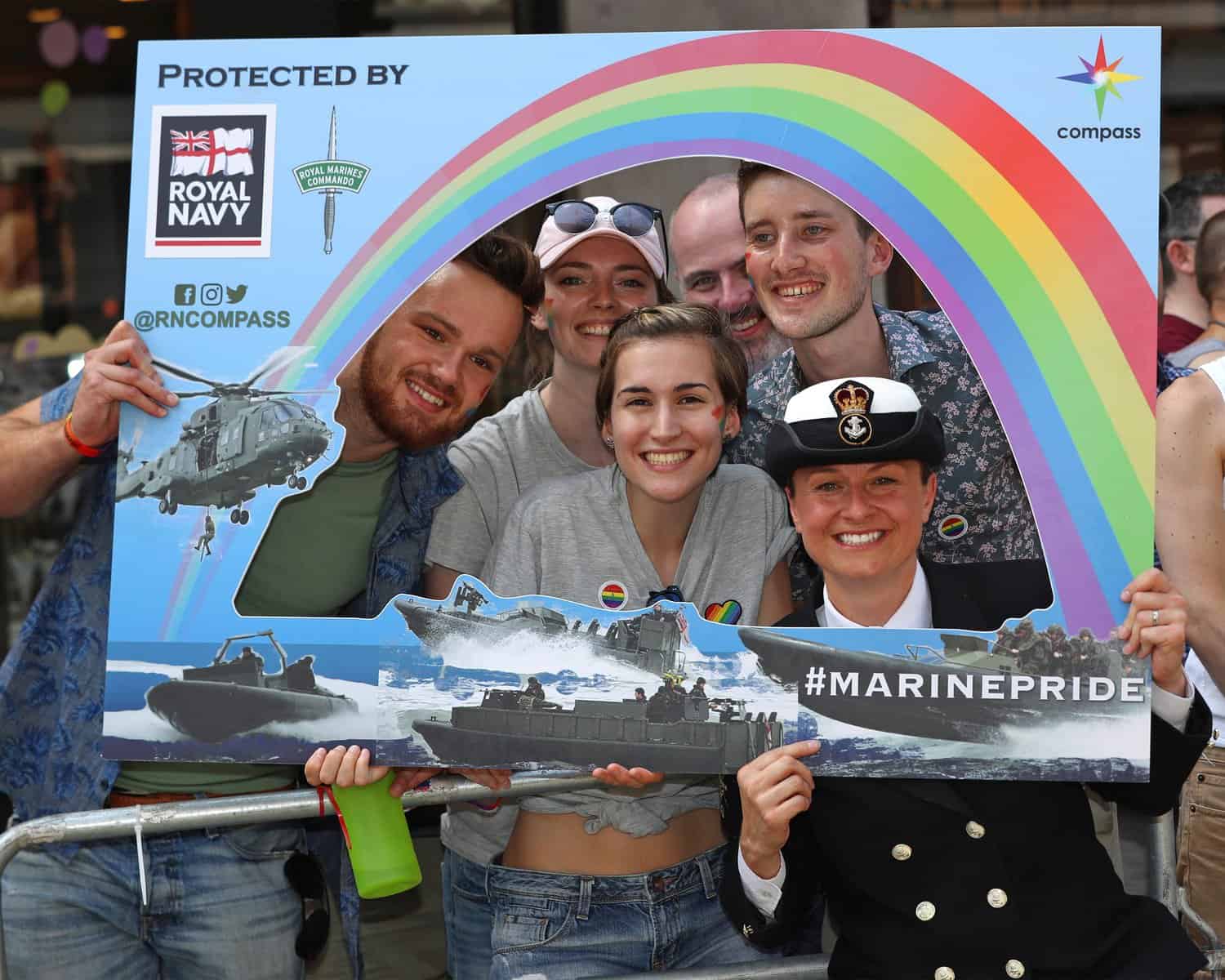By Jo Stanley, academic contributor to Gale’s Global Encyclopedia of LGBTQ History
Having a rainbow at your fingertips is more than handy – it’s a luxurious necessity. So the publication of Gale’s Global Encyclopedia of Lesbian, Gay, Bisexual, Transgender, and Queer (LGBTQ) History is something I celebrate. It will be extremely satisfying for those who want to quickly find out what so many reference works have previously omitted about LGBTQ history.
As an expert on the gendered sea I’ve previously been pleased to contribute to other encyclopedias, but being able to add my entry on the UK merchant and royal navies to the Global Encyclopedia of LGBTQ History is even more special. Why? Because I’m giving clear information about something still difficult to find material about. There’s been no such succinct summary anywhere else.
This month, LGBTQ+ History Month in the UK, is always a time when I celebrate how far we’ve come. For example, the National Maritime Museum now has a programme of activities for LGBTQ+ history month. Scholars there are reappraising the historic images such as the one below, which might once have been filed simply as ‘on-board fancy dress costumes’.

The Royal Navy: from Persecution to Prizes
In my encyclopedic entry on the Royal Navy, I show how the Navy has changed over the last decades from being an organisation that once persecuted those suspected of being homosexual, often wrecking their lives, and for centuries even hanged such men. In October 2018 the Royal Navy and the Royal Marines won the PinkNews prize for ‘public sector organisations that have gone above and beyond to become LGBT+ inclusive and show their support for LGBT rights’.
On warships and at bases being ‘out’ was not possible until the 2000 European Court of Human Rights began the armed forces rainbow revolution with the judgment Lustig-Prean and Beckett v. United Kingdom (2000; 29 ECHR 548). Since that time heteronormative naval culture and the macho Jack Tar stereotype have been bypassed in a world where sexual orientation is not seen as an issue; where Royal Navy Compass (the Sexual Orientation and Gender Identity Network of the Naval Service) is on Facebook; and where uniformed personnel contingent march at the annual Pride celebrations, with Admiralty blessings.

The Merchant Navy: a ‘Queer heaven’?
In contrast, some men (though not many women) enjoyed a remarkable and exceptional ‘queer heaven’ in the Merchant Navy (part of the transport and tourism industries), especially in the period 1945–1985. Indeed, some people joined the Merchant Navy because it had a reputation for being a supportive and acceptant situation, even though homosexual acts by crew remained illegal until 1996.
Being out, and even outrageously camp, was easier for low-status crew members who worked in hotel-type jobs in the carnivalesque culture of passenger vessels; officers – especially deck and engine personnel – stayed in the closet if they wanted a career, until relatively recently.
The fragmented nature of the commercial maritime industry today means there is no formal LGBT+ support network, as exists in the Royal Navy. The Merchant Navy’s (relative) permissiveness means there is no perceived need for gay-friendly policies.

What both navies have in common is long voyages, which means people are away from loved ones for significant periods of time and so form new bonds with their shipmates. Sometimes the intense comradeship that necessarily develops leads to love and to lifelong bonds; in the Merchant Navy, couples got publicly ‘married’ and ‘divorced’ in the ship’s crew bar in the late twentieth century. Plus, the heterotopic nature of the ship could lead to freely experimenting with identity and contingent same-sex relations.[1]
I was pleased to carve out a brief summary of the hugely complex history of these positive developments for the Global Encyclopedia of LGBTQ History. Sending copies of my entry to friends worldwide working on lavender (LGBTQ) maritime history is satisfying, especially when they tell me they are circulating information about the encyclopedia’s emergence.
Although my entry is about the UK, the information is useful for making comparisons with other countries. Sweden also had queer heavens afloat in the same period, and visits to South East Asia, with its acceptance of trans people, was a crucial informal education for many seafarers.
My pride and delight in the encyclopedia is not a matter of ‘she would say that, wouldn’t she’—it’s more than that. As one of the scholars constructing a visible account of marginalised maritime people, I know that new historical explorations can benefit from the existence of a few foundational, easily-accessible reference opportunities.
They may function as triggers, and as statements to be productively argued for, or against. I hope that future explorers of queered history will find all the entries in this encyclopedia useful in these ways, and more. Such a radical, global, digitised resource holds great potential, and may lead to exciting initiatives as yet undreamt.
Interested in learning more about the Global Encyclopedia of LGBTQ History? Watch a webinar discussing the title, and request a trial here.
FINDING OUT MORE
Baker, Paul, and Stanley, Jo. Hello Sailor! The Hidden History of Gay Life at Sea. London: Longman, 2003.
Nilsson, Arne. “Cruising the Seas: Male Homosexual Life on the Swedish American Line, 1950–1975.” SQS-lehti 1, no. 1 (2006): 71–85.
Seligmann, Matthew S, Rum, Sodomy, Prayers, and the Lash Revisited: Winston Churchill and Social Reform in the Royal Navy, 1900-1915. Oxford: Oxford University Press, 2018.
Blog post cover image citation: 2018 Pride march in London. © Crown copyright 2019, MOD 45164190.
[1] Heterotopia is a concept elaborated by philosopher Michel Foucault to describe certain cultural, institutional and discursive spaces that are somehow ‘other,’ such as musicals or cemeteries – https://en.wikipedia.org/wiki/Heterotopia_(space)


